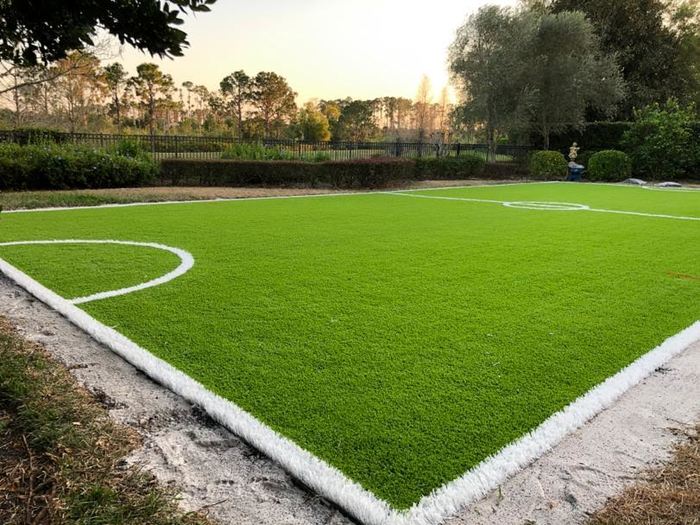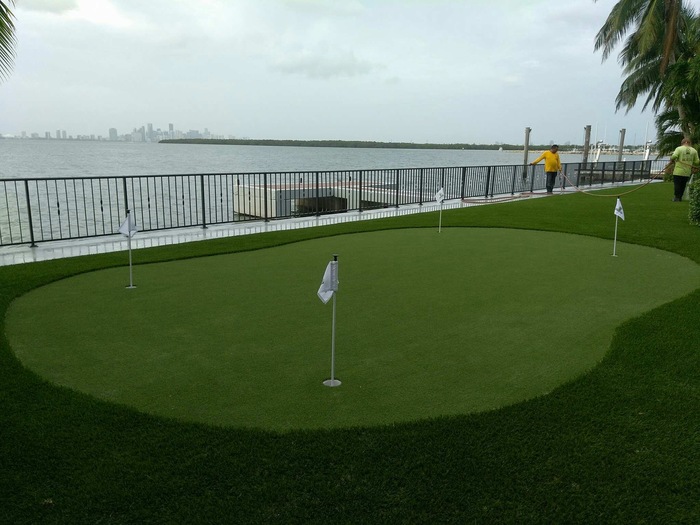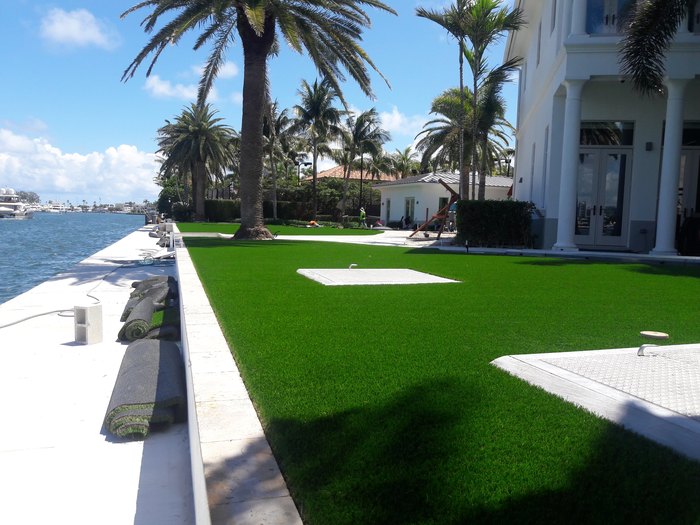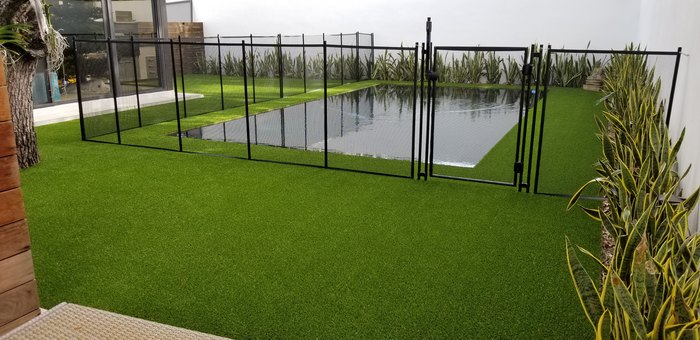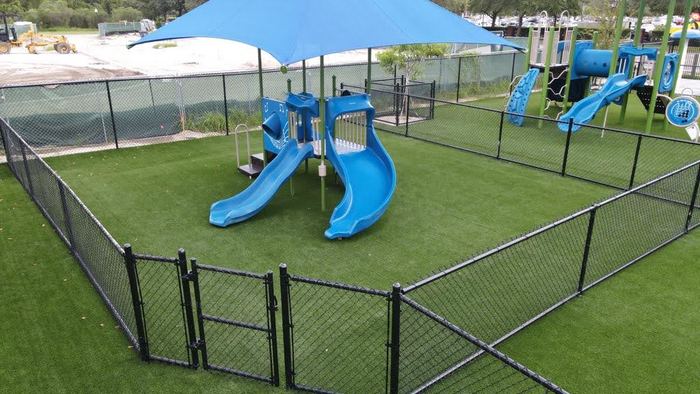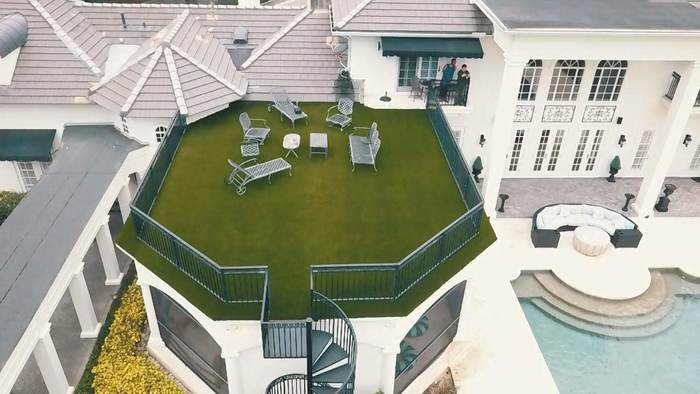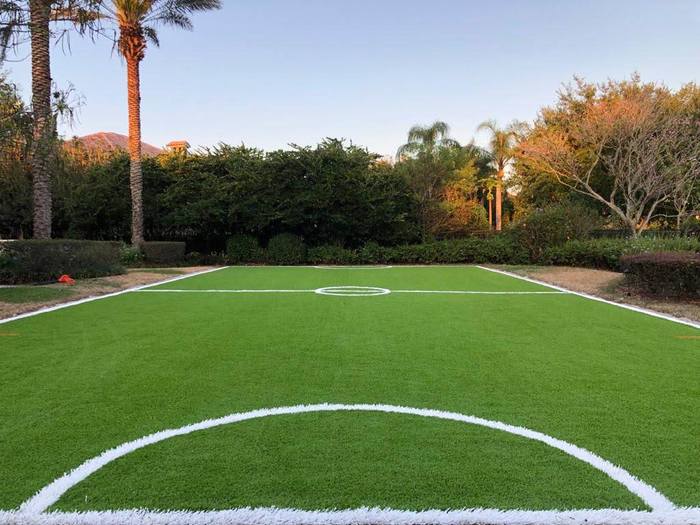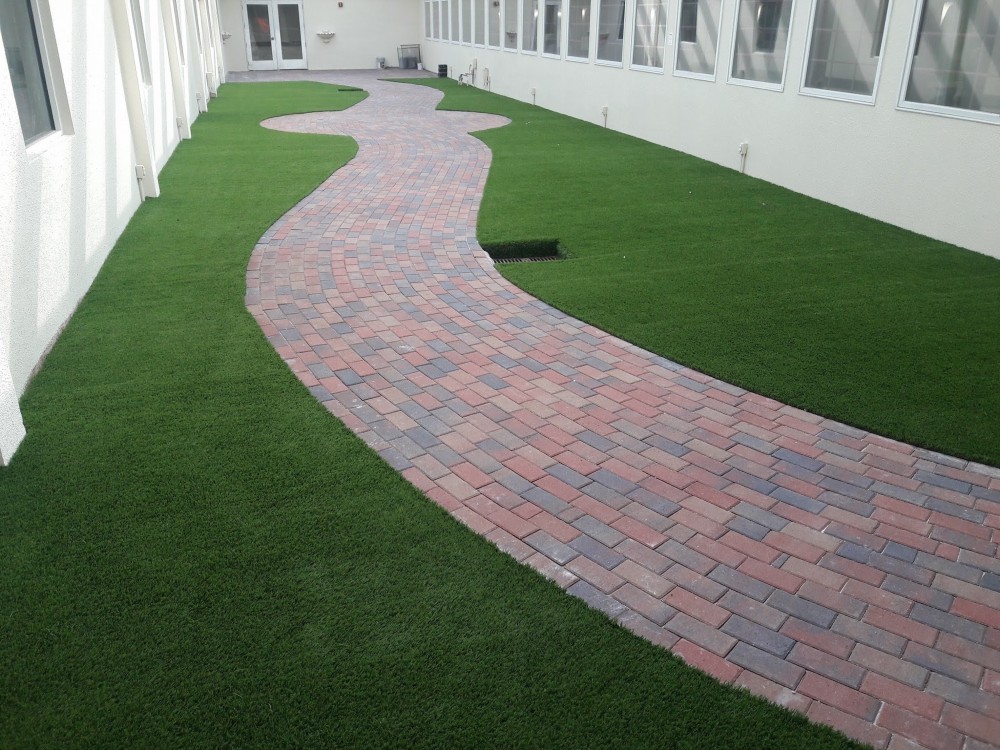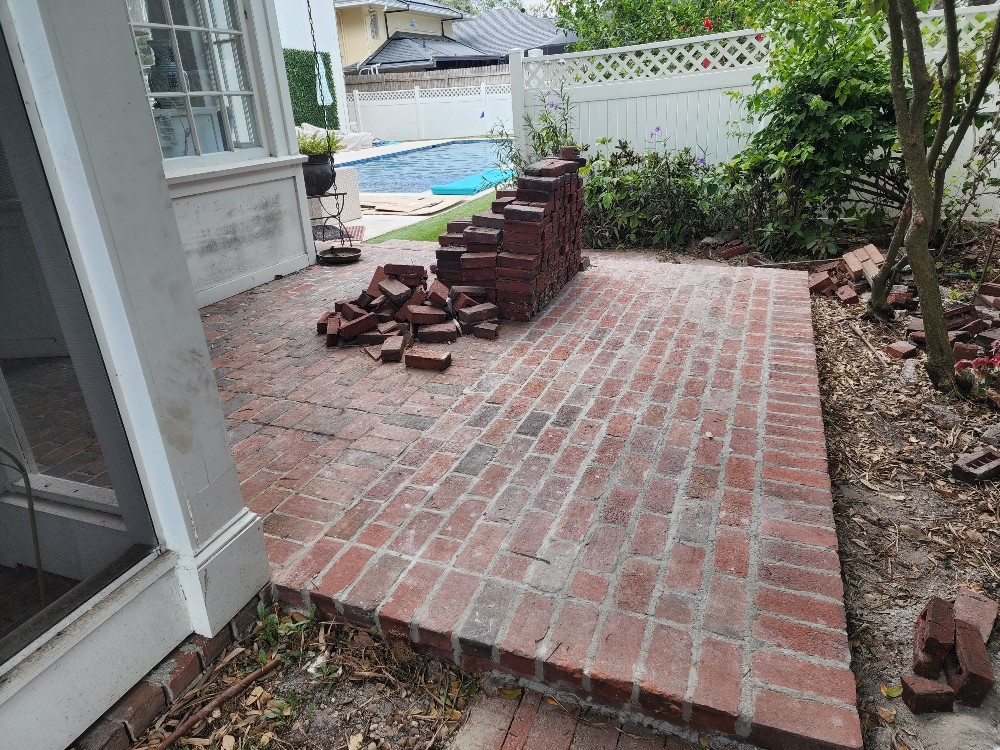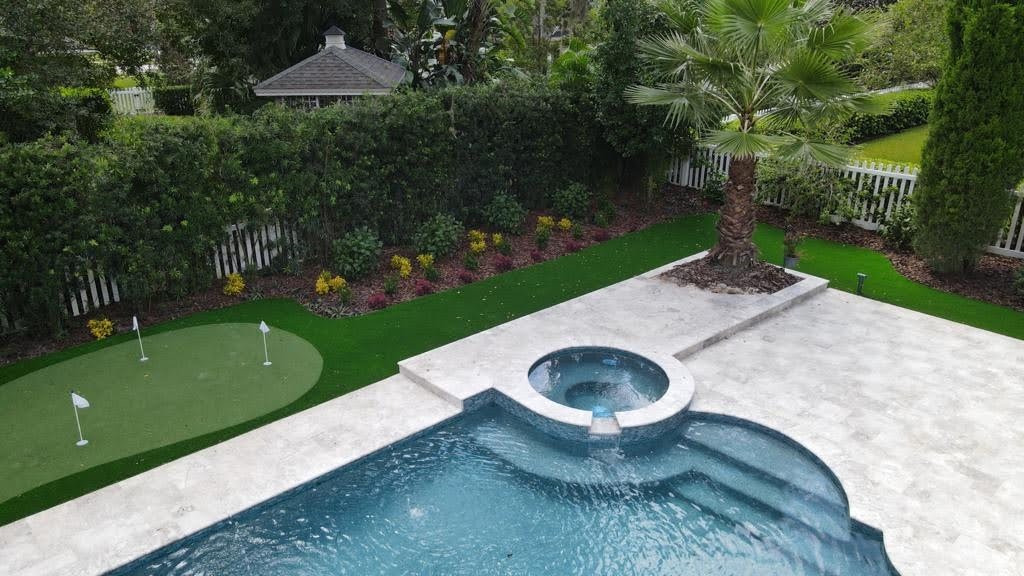Our Services
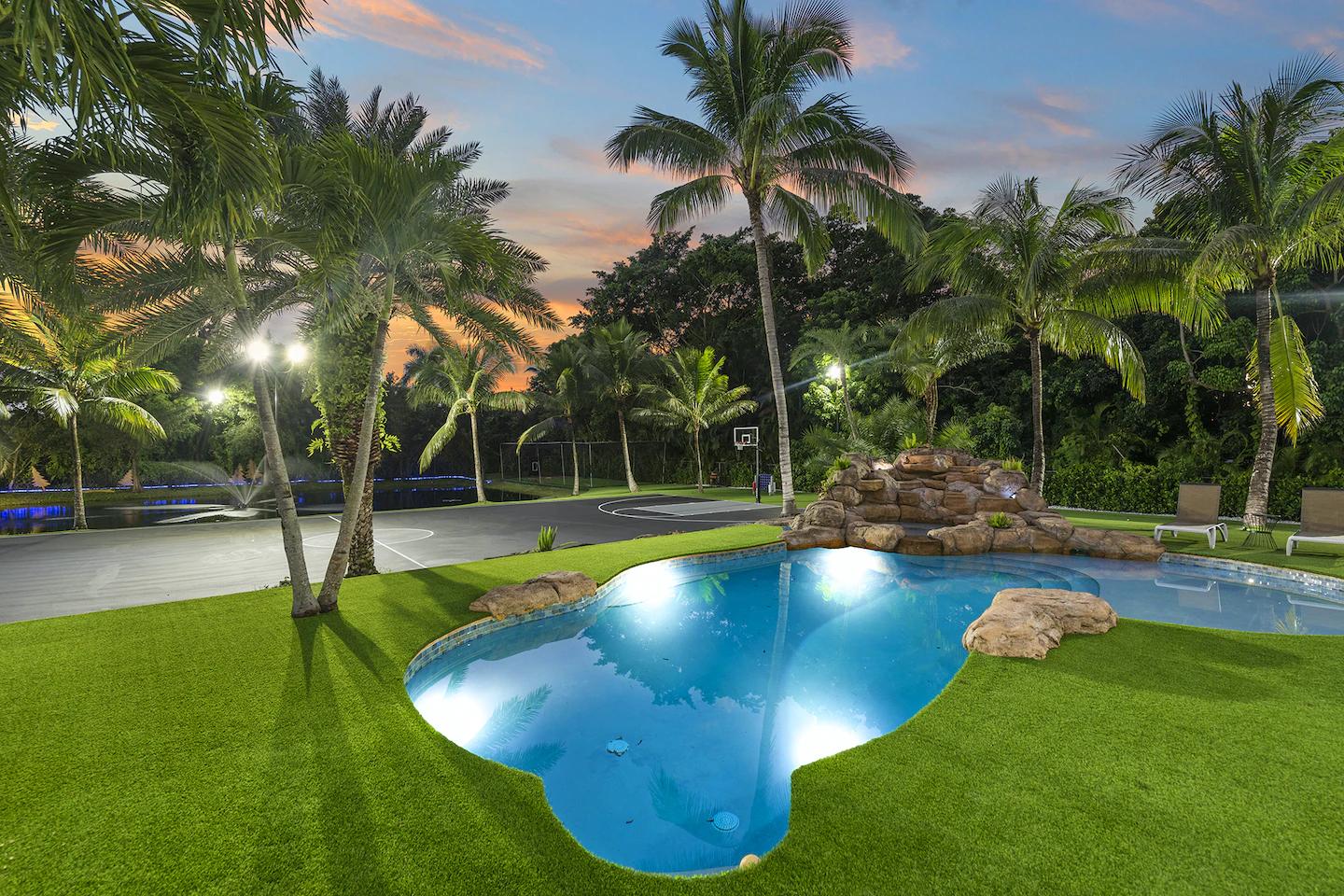
Unrivaled Artificial Turf & Pavers Expertise and Professionalism
We appreciate you coming to check out our website and all the pictures that you see on this website will show the artificial Grass & synthetic turf projects done by The Artificial Grass Pros of Tampa including backyard landscaping renovations, front & back yards, playgrounds, putting greens, playgrounds, and even sports fields of astroturf.
REQUEST A FREE ESTIMATE
Expert Synthetic Grass & Pavers Installation Services
All our synthetic turf products and artificial grass installations include a manufacturer’s products and labor warranty.
Artificial grass installation is a fast and cost-effective way to transform your outdoor and indoor space. Whether you have a small or large area, The Artificial Grass Pros of Tampa Bay are the artificial grass installation company that can help you create the beautiful, low-maintenance, and sustainable lawn of your dreams. With the The Artificial Grass Pros of Tampa Bay, you can enjoy a lush, green lawn all year round, without the hassle of mowing, watering, and fertilizing.
Here are some key benefits of working with an artificial grass installation company:
- Expert Installation: A professional installation company has the expertise and experience to ensure that your artificial grass is installed correctly. They will assess your space, determine the right type of grass for your needs, and ensure that it is installed to the highest standards.
- Customizable Options: Artificial grass installation companies offer a wide range of options to choose from, including different types of grass, pile heights, and colors. You can create a lawn that fits your specific needs and preferences.
- Low Maintenance: Artificial grass requires little to no maintenance, freeing up your time for other activities. You won’t have to worry about watering, mowing, or fertilizing your lawn, which can save you money in the long run.
- Durability: Artificial grass is designed to last for many years, making it a smart investment for your property. With proper care, your artificial lawn can look great for many years to come.
- Environmentally Friendly: Artificial grass does not require pesticides, herbicides, or fertilizers to maintain its appearance. This makes it a more environmentally friendly option compared to traditional lawns.
- Cost-Effective: While the initial investment in artificial grass may be higher than natural grass, it is a cost-effective option in the long run. With no need for regular maintenance, you can save money on watering, mowing, and other lawn care costs.
If you are looking to transform your outdoor space, an artificial grass installation company can help. With The Artificial Grass pros of Tampa Bay , you can enjoy a beautiful, low-maintenance, and sustainable lawn for years to come.
VARIOUS OPTIONS FOR YOUR INSTALL
Offering many options for all your applications of synthetic turf and artificial grass. Whether its a commercial or residential project, we can help with playground, putting greens, landscaping, sports, and many more.
LONG LASTING LIFE EXPENCTANCY
Top grade artificial grass and synthetic turf options with professional grade, and natural laooking synthetic turf with over 20 years of expected life.
KID & PET FRIENDLY
Offering top grade premium Made in USA Fake Grass options that are all safe for children & pets alike. The artificial grass is amde to withstand the elements and ready to look beautiful all year round.
ALMOST MAINTENANCE FREE
No need to mow, no chemicals, or watering of the yard. Easy and simple clean up for multiple style applications including pet and playgournd applications.
Follow Us on Social Media
Check out our blog feed!
BLOGS

Benefits of Installing Artificial Grass in Tampa Homes
Installing artificial grass in Tampa homes offers a practical and eco-friendly alternative to traditional lawns. With the city’s hot climate and frequent water restrictions, maintaining a lush, green lawn can be challenging. Artificial grass provides a low-maintenance...
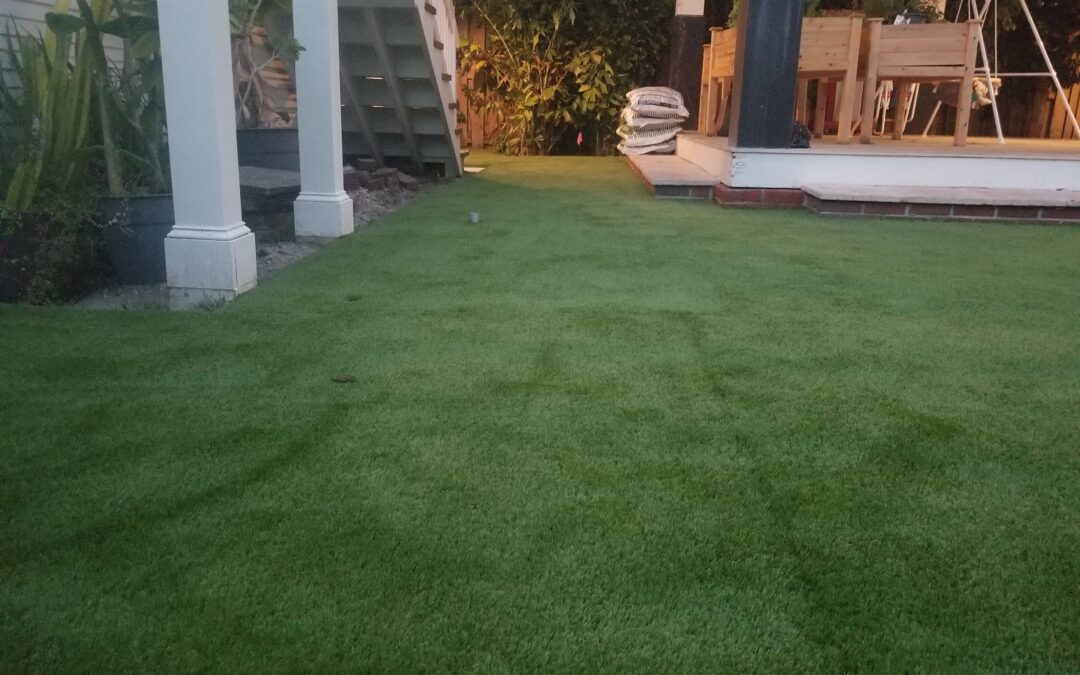
Eco-Friendly Aspects of Using Artificial Grass Outdoors
Artificial grass has become a popular choice for homeowners and businesses looking to create beautiful, low-maintenance outdoor spaces. One of the major advantages of artificial grass is its eco-friendly nature. Unlike natural grass, artificial grass doesn’t require...
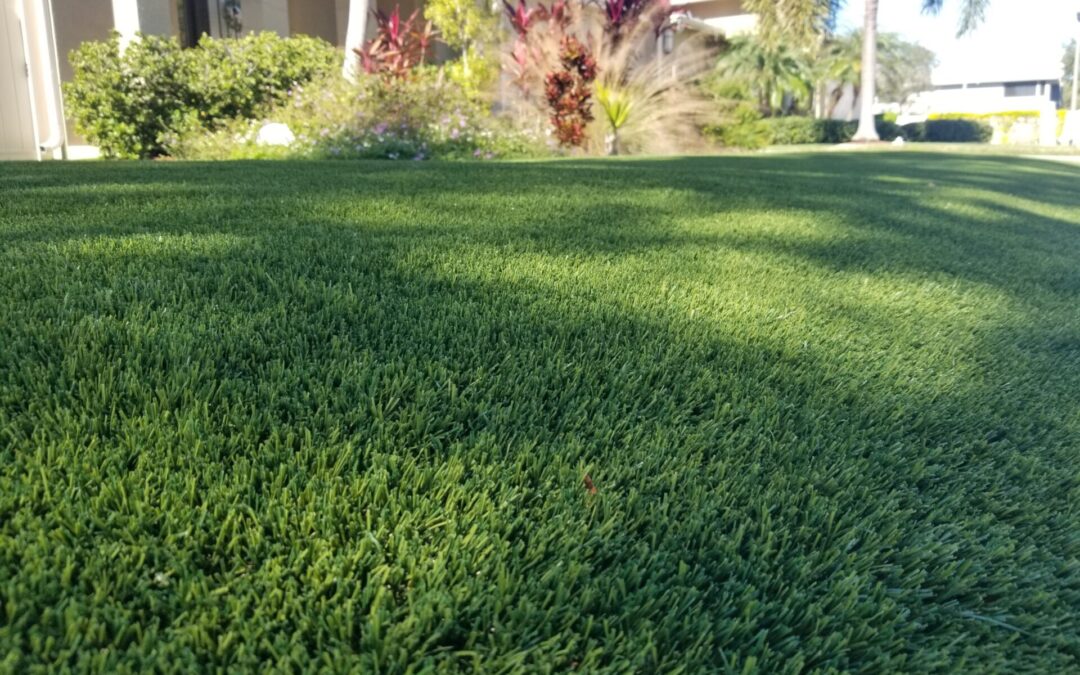
Creative Uses for Artificial Grass Beyond Your Lawn
Artificial grass is no longer just a practical solution for lush, green lawns without the upkeep. This versatile material has found its way into a host of creative and unexpected applications, elevating spaces and solving design challenges in ways that might surprise...

Artificial Grass Enhancing Backyard Aesthetics
https://youtu.be/NzhSydm32A4?si=oAABCFtGQnM6dV77 Artificial grass is transforming backyards into stunning, low-maintenance spaces that look great year-round. Unlike natural grass, it stays lush and green without watering, mowing, or worrying about bald patches. It's...
FAQS
How Much Does it Cost to Install Artificial Turf?
The cost of artificial grass installation depends on many factors such as current ground conditions, and ease of access, but also depends on the synthetic turf selected as well as optional upgrades such as infill substitutes, base selection, and drainage selection. Let our team members help you out today.
Why Do Homeowners Install Artificial Grass in Tampa, Clearwater, and St. Petersburg Florida?
Artificial Grass and synthetic turf is becoming m,ore popular in many cities from Tampa, to Bradenton, and the entire Gulf Coast areas for many reasons. Not only does it stay green 365 days a year therefore giving it aesthetic advantages, but also serves to cut your overall expenses that comes due to maintenance requirements.
Is Artificial Turf Safe for animals and children?
The answer is yes! The Artificial Grass pros of Tampa are proud distributors of InfiniTurf Premium artificial grass that are proudly Made and tested in the USA . Our products are lead-free, mercury free, and manufactured using using the best products in the industry.
Does Artificial Grass Get Warm?
Synthetic grass does get warmer than a natural grass when it’s out in the strong Florida sun, but does not get as warm as concrete or pavers. We proudly offer a Cool Turf line that is manufactured with engineered yarn that helps reflect the direct sun and therefore resultys in a turf that maintains about 12-18 degrees cooler than regular turfs. We also offer infill options that will help you deal with the temperature if it is still a concern.
How Do You Clean Artificial Grass?
We recommend using a leaf blower, a soft bristle push broom, or a sweeper for quick cleaning options. This with water should be able to maintain your artificial grass along with the many days of rain that the Florida weather offers. For K9 installations that have Zeofill apllications, we do have cleaners and reenergizers such as PE51 that help for stronger and better results.
Will Installing Turf Reduce Bugs?
Absolutely! Since we remove the grass and excavate 4 inches of soil, the native home for most bugs is now buried under 4 inches of compacted base and rocks. This base is not native to these bugs so they simply go elsewhere to find a new home.
How Long Can I expect my Artificial grass to last?
InfiniTurf artificial grass and synthetic turf products haver an expected 20 year lifespan and come with a 15 Manufacturer Warranty.
Does artificial grass Help improve the Value of my Property??
Artificial grass helps sell properties by adding to the overall appeal and desire when being compared to regular homes or properties without it. Many realtors and home flippers use our services when selling their real estate for these same properties.
Which Suppliers of Artificial Grass Do You Trust?
Leading The Way: Top Rated Artificial Grass Installation in Tampa, Florida
Artificial Grass Pros is located at 4714 Cypress Tree Drive, Tampa, Florida. From Tampa International Airport (TPA) take George J Bean Pkwy, FL-589 Toll N and Nixon Rd to Country Run Rd in Greater Carrollwood. Then head northeast on George J Bean Inbound Pkwy/George J Bean Pkwy toward Airport Recirculation Dr, and take the FL-589Toll N/Veterans Expwy ramp. Next, keep right to continue on Exit 3, follow signs for FL-589 Toll N/Veterans Expressway/County Rd 576/Memorial Hwy/Eisenhower Blvd/Air Cargo, then keep left and follow signs for FL-589Toll N/Veterans Expwy and merge onto FL-589 Toll N. After that take exit 6B toward Anderson Rd, and keep right at the fork to stay on Exit 6 B, follow signs for Anderson Rd. At this point use the left 2 lanes to turn left onto Anderson Rd, and turn right at the 1st cross street onto W Linebaugh Ave. Then turn left onto Nixon Rd, and turn right onto Co Rd 587. Continue on Country Run Rd. Drive to Cypress Tree Dr, and turn left onto Country Run Rd. Finally, turn right onto Cypress Tree Dr, and Artificial Grass Pros will be on the right.
We’re open: Monday-Friday 08:00-18:00.
For additional questions, you can call us at 813-212-7160
Areas We Serve

